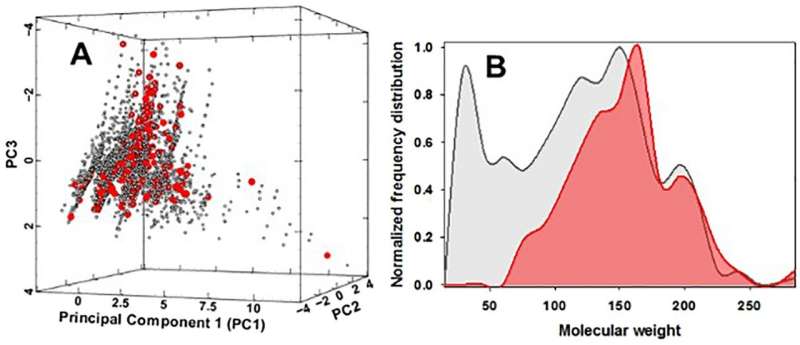This article has been reviewed according to Science X's editorial process and policies. Editors have highlighted the following attributes while ensuring the content's credibility:
fact-checked
peer-reviewed publication
proofread
AI simulation of flavored vape reactions reveals formation of many hazardous chemicals

New research has uncovered the potentially harmful substances that are produced when e-liquids in vaping devices are heated for inhalation. The study, published in Scientific Reports, highlights the urgent need for public health policies concerning flavored vapes.
The research team at RCSI University of Medicine and Health Sciences, Dublin, used artificial intelligence (AI) to simulate the effects of heating e-liquid flavor chemicals found in nicotine vapes. They included all 180 known e-liquid flavor chemicals, predicting the new compounds formed when these substances are heated within a vaping device immediately prior to inhalation.
The analysis revealed the formation of many hazardous chemicals including 127 which are classified as "Acute Toxic," 153 as "Health Hazards" and 225 as "Irritants." Notably, these included a group of chemicals called volatile carbonyls (VCs) which are known to pose health risks. Sources for VCs were predicted to be the most popular fruit, candy and dessert-flavored products.
Lead author, Professor Donal O'Shea, Professor of Chemistry and Head of Department, said the findings are very concerning. "We wanted to understand, before it's too late, the likely impact flavored vapes are having on the health of the 4.5 million vapers in the U.K. Our findings indicate a significantly different profile of chemical hazards compared to what we are familiar with from traditional tobacco smoking."
"It is plausible that we are on the cusp of a new wave of chronic diseases that will emerge 15 to 20 years from now due to these exposures. We hope this research will help people make more informed choices and contribute to the conversation on the potential long-term health risks and the regulation of vaping, which this research suggests should be comprehensive."
The study also highlighted the complexities introduced by the huge array of flavors available in vaping products, which include 180 different chemicals blended in various amounts. This cocktail of chemicals, primarily derived from the food industry where they have a good safety record for specific uses, were never intended to be heated to high temperatures for inhalation.
As vaping devices vary widely and are often user-customized, the temperature control and resulting chemical reactions can differ, increasing the unpredictability of potential health risks. This variability requires further research using the AI framework established in this study, which could also lead to the development of risk reports for individual flavors, providing an informative public health policy resource.
Considering the popularity of flavored vapes among non-smoking teenagers and young adults, understanding the long-term effects of these products on public health, morbidity and mortality is crucial. This study demonstrates that without comprehensive regulation, as we try to treat the nicotine addictions of older tobacco smokers, there is a substantial risk of transferring new health issues to younger generations.
More information: Akihiro Kishimoto et al, Forecasting vaping health risks through neural network model prediction of flavour pyrolysis reactions, Scientific Reports (2024). DOI: 10.1038/s41598-024-59619-x
Journal information: Scientific Reports
Provided by RCSI University of Medicine and Health Sciences





















